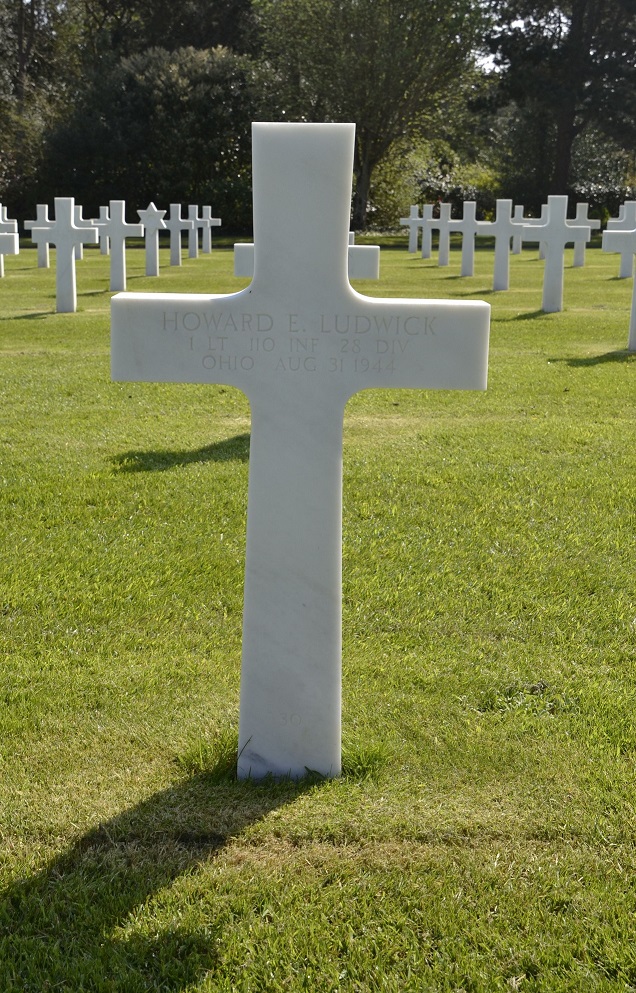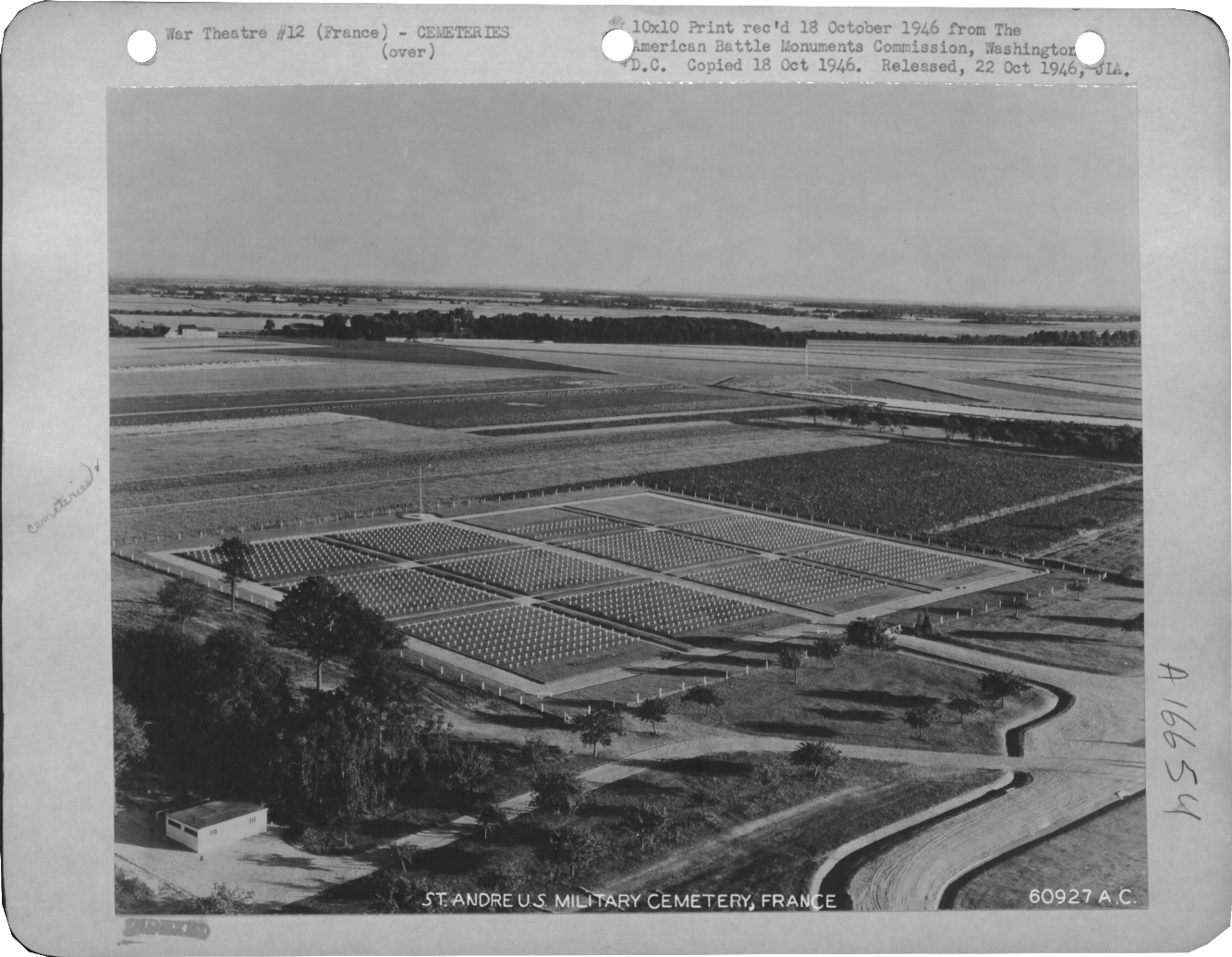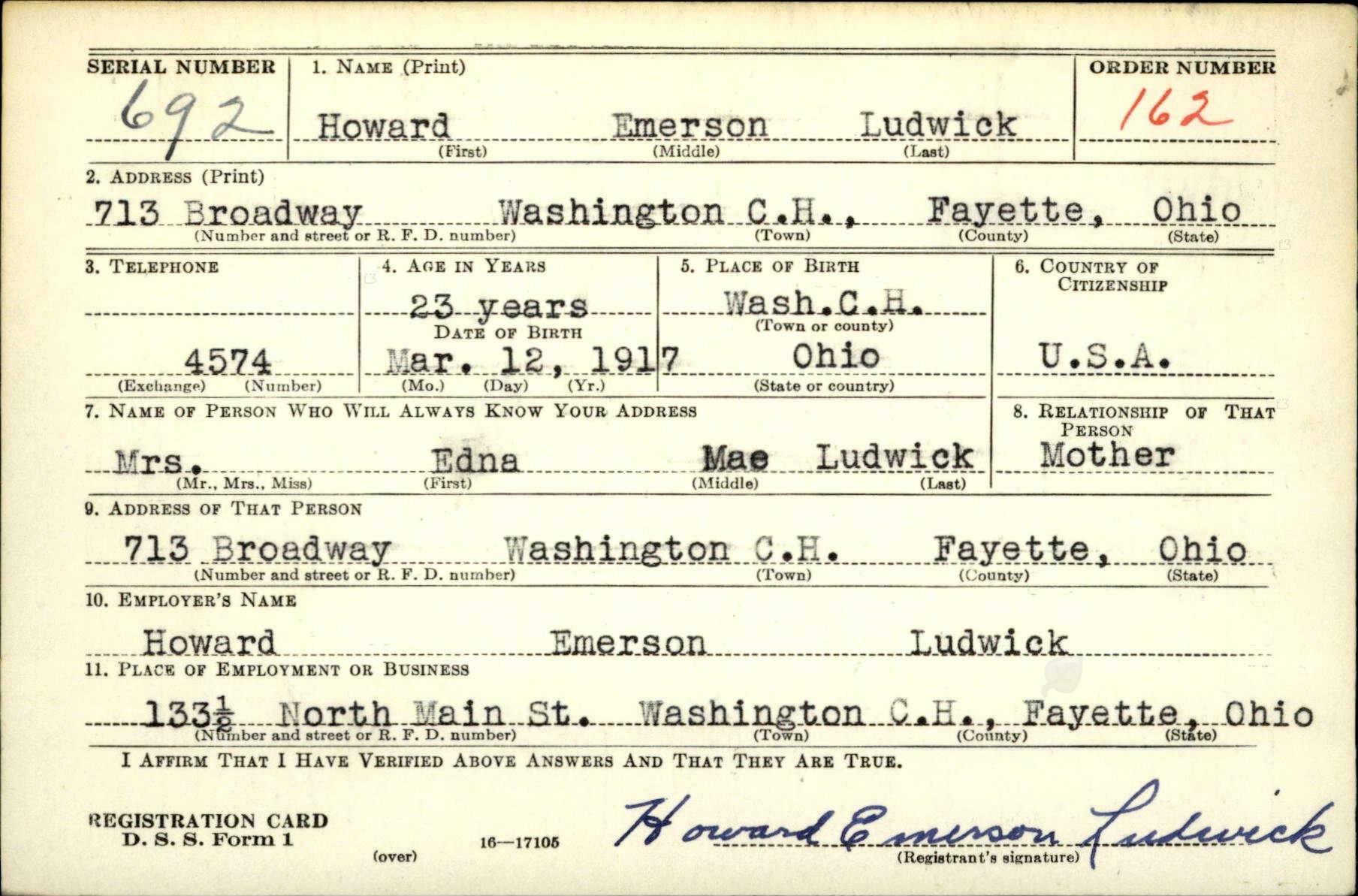|
Howard Emerson LUDWICK
| ||||||||||||||||||||||||
|---|---|---|---|---|---|---|---|---|---|---|---|---|---|---|---|---|---|---|---|---|---|---|---|---|
|
Washington High School, 1934 Source : Hudson Louie (Ellen Marchese) | ||||||||||||||||||||||||
| NUMERO DE SERVICE | O-1300824 (35004500) | |||||||||||||||||||||||
| AGE | 27 ans | |||||||||||||||||||||||
| DATE DE NAISSANCE |
12 mars 1917 Washington Court House, Fayette County, OHIO | |||||||||||||||||||||||
| ÉTAT D’ENRÔLEMENT | OHIO | |||||||||||||||||||||||
| FAMILLE |
Parents : Peter Simon & Edna May Graves LUDWICK Frères et sœurs : Peter Simon & Ronald Kenneth | |||||||||||||||||||||||
| GRADE |
| |||||||||||||||||||||||
| FONCTION | Infantry Man | |||||||||||||||||||||||
| PROFESSION AVANT INCORPORATION | Danseur et choriste | |||||||||||||||||||||||
| DATE D'INCORPORATION | 10 mars 1941 Fort Hayes Columbus OHIO | |||||||||||||||||||||||
| COMPANY | ||||||||||||||||||||||||
| BATTALION | ||||||||||||||||||||||||
| REGIMENT | 110th Infantry Regiment | |||||||||||||||||||||||
| DIVISION | 28th Infantry Division | |||||||||||||||||||||||
| DATE DU DECES | 31 août 1944 |
Source : Christophe CLEMENT
| ||||||||||||||||||||||
| Source : Christophe CLEMENTSTATUT | KIA | |||||||||||||||||||||||
| LIEU DU DECES | Creil, Departement de l'Oise | |||||||||||||||||||||||
| CIMETIERE PROVISOIRE |
CIMETIERE PROVISOIRE de St André N°3572
| |||||||||||||||||||||||
| CIMETIERE | NORMANDY AMERICAN CEMETERY de Colleville | |||||||||||||||||||||||
| TOMBE |
| |||||||||||||||||||||||
| DECORATION |
| |||||||||||||||||||||||
| ||||||||||||||||||||||||
| HISTOIRE | ||||||||||||||||||||||||
| L'officier défilera sur les champs Elysée en août 1944 à Paris. Source : Christophe CLEMENT | 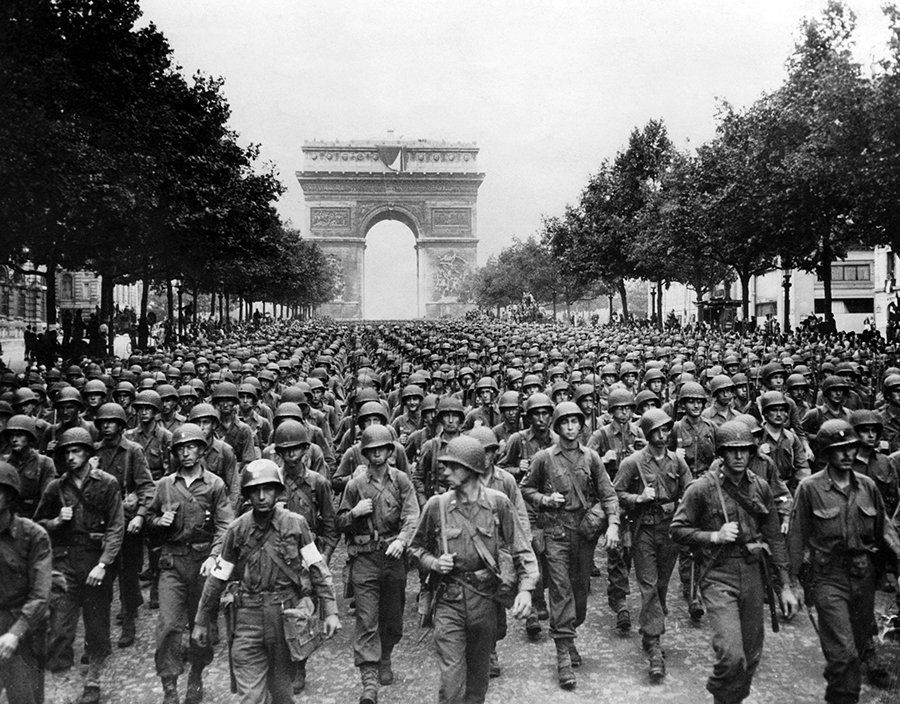 | |||||||||||||||||||||||
|
Source : Fold3 | ||||||||||||||||||||||||
| | ||||||||||||||||||||||||
Activated/Activé |
Normandy/Normandie |
| 17 Feb 1941 | Days of Combat/Jour de Combat 196 |
| Casualties/Victimes 16 762 | |
Entered Combat/Entré au combat |
|
| 27 Jul 1944 Normandy | |
|
Commanding Generals/Commandants généraux Maj. Gen. Edward Martin (Feb 41 - Dec 41) |
Campaigns/CampagnesNormandy (6 Jun 44 - 24 Jul 44) |
PLAN DE ROUTE DE LA CAMPAGNE - CAMPAIGN ROUTE MAP |
|
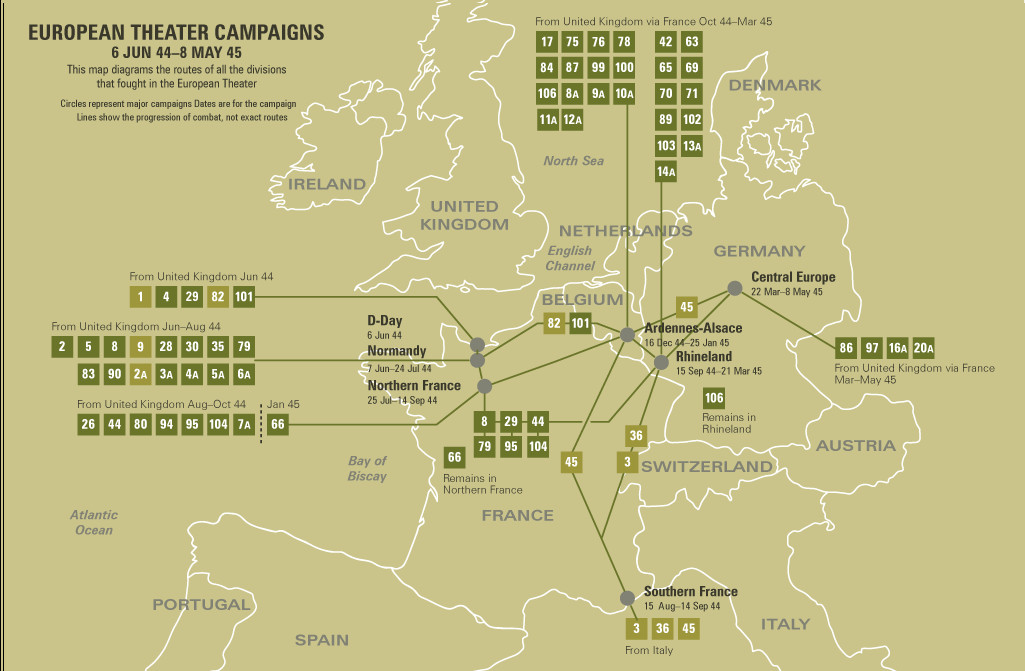 |
|
DIVISION CHRONICLE
|
CHRONIQUE DE DIVISIONLa 28th Infantry Division, après s'être entraînée en Angleterre, débarqua en Normandie, en France, le 22 juillet 1944, et entra dans la lutte des haies au nord et à l'ouest de Saint-Lô. Poursuivant leur chemin contre une opposition désespérée, les hommes du 28 emmenèrent Percy le 1er août et Gathemo le 10 août. Le 12, le général de brigade Wharton a été tué quelques heures après avoir pris le commandement. La division a commencé à rouler vers le nord et l'est, le 20 août, rencontrant une légère résistance, sauf au Neubourg, le 24 août, et à Elbeuf le 25. Après avoir défilé à travers Paris, le 29 août, il continue sa route à travers la France et le Luxembourg jusqu'à la frontière allemande, se rassemblant près de Binsfeld, le 11 septembre: Il commence à frapper la ligne Siegfried, le 12 septembre, détruit les casemates et autres fortifications. 1er octobre, puis retourné le 6 pour les patrouilles et la rotation des troupes. Le 28 novembre, la forêt de Hurtgen s'écrase, le 2 novembre 1944, et dans la bataille sauvage qui suit, Vossenack et Schmidt changent de mains plusieurs fois. Le 19 novembre, la Division s'est déplacée vers le sud pour maintenir un secteur de 25 milles le long de la rivière Our au Luxembourg. L'offensive Von Rundstedt s'est déchaînée le 16 décembre sur l'ensemble du front de division. Le 28ème combattit en utilisant tout le personnel disponible et repoussa l'horaire ennemi avant de se retirer à Neufchâteau, le 22 décembre, pour une réorganisation. La Division s'est déplacée vers une position défensive le long de la Meuse de Givet à Verdun, le 2 janvier 1945, puis à une patrouille des Vosges, le 17 février. Du 1er au 5 février, il participa à la réduction de la poche de Colmar, se dirigeant vers le Rhin et traversa le canal Rhin-Rhône, le 6 février. Après une attaque contre la rivière Ahr, le 6 mars, le 28 a commencé à s'entraîner, à se réhabiliter et à tenir des positions défensives. À partir du 7 avril, il remplit des fonctions d'occupation à Julich et à Kaiserlautern jusqu'à ce qu'il quitte la France. |
| SOURCE INFORMATION & PHOTO | Armydivs.squarespace.com |
|---|
| SOURCE INFORMATION & SOURCE PHOTO | Aad.archives.gov - Findagrave.com - Arnaud Gate - Abmc.gov |
|---|---|
| PROGRAMMEURS | Victor, Jean-Philippe, Eric, Henri, Garrett, Clive, Frédéric & Renaud |






















